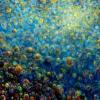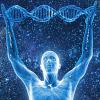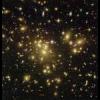Outside cells NMN->NR
NR enter cell membrane
Inside cells NR->NMN->NAD+
Old data. NRK1,2 are in all organs. Old biology books are out of date. New data are coming out every day.
Mike's bases his opinion of "Outside cells NMN->NR" on an old Dr. Brenner study.
However, recent work done by Dr. Sinclair suggests that there is the possibility that there are as yet undiscovered transporters that facilitate the passage of NAD+ and NMN into the cell via the plasma membrane.
This is an interesting article that discusses the current thinking of academia.
https://www.leafscie...-cell-membrane/
Excerpt from the article:
"Can NAD+ or NMN pass through the plasma membrane?
Recently, there has been some debate in academia regarding the ability of nicotinamide adenine dinucleotide (NAD+) and one of its precursors, nicotinamide mononucleotide (NMN), to pass through the plasma membrane. It has been suggested that NMN cannot pass through the plasma membrane. However, there are some issues with this, given that there is research suggesting that this is not always the case and that NMN and/or NAD+ can cross the membranes of at least some cell types.
As far back as 2009, there is data that throws doubt on this assumption in the publication: Detection and pharmacological modulation of nicotinamide mononucleotide (NMN) in vitro and in vivo [1].
Also, evidence that intracellular NMN contents promptly increase when the nucleotide is added to the culture media indicates that plasma membrane is permeable to this nucleotide. These findings suggest that the pharmacologic effects of exogenous NMN in cultured cells and mice are due to cellular uptake and changes in NAD contents.
The matter is far from settled, as we can see from what Dr. David Sinclair says in his recent review Therapeutic Potential of NAD-Boosting Molecules: The In Vivo Evidence [2].
Whether or not NMN is taken up by a transporter is currently the subject of debate [3-4]. Brenner, Cantó and colleagues argue that NMN is not taken up quickly enough to invoke the presence of a transporter and that both NAD+ and NMN undergo extracellular degradation to generate permeable precursors that can be taken up by cells [4].
However, things are not that clear, and it is plausible that there could be specificity of cell types and NAD+ precursors. It could be the case that some cell types readily take up NAD+ or NMN and some do not; thus, finding out which do and do not should be the priority here. It is not at all unusual for such specificity to be encountered in biological systems, so this is something that needs to be determined during human clinical trials.
On the other hand, Imai argues that this is likely a cell-type-specific phenomenon and that some cell types can rapidly take up NMN [3]. If so, the identification of the putative transporter will help resolve the debate and help identify which cell types and tissues are able to transport NMN across the plasma membrane. Additional studies with isotopically labeled NAD+ precursors to trace the uptake and metabolism of these molecules should help answer these questions.
Dr. Sinclair also mentions here the possibility that there are as yet undiscovered transporters that facilitate the passage of NAD+ and NMN into the cell via the plasma membrane. Transporters (or membrane transport proteins) are proteins involved in the transport of ions, molecules, and macromolecules and they exist within and span the cell membrane allowing them to transport ions and molecules through them.
Transporters play an important role in cell survival, as these proteins make the interaction between the external and internal environment of a cell possible, importing and exporting substances in and out of the cell. In this case, Dr. Sinclair is suggesting that there are likely additional undocumented transporters that can facilitate the movement of NAD+ and NMN into the cell waiting to be discovered."
































 This topic is locked
This topic is locked



























